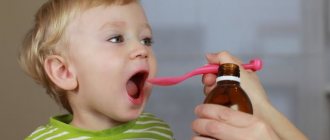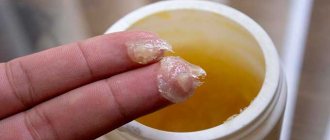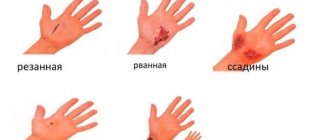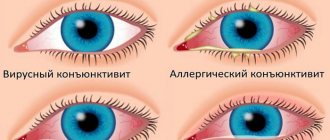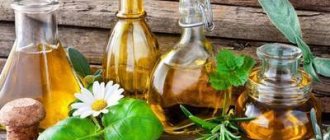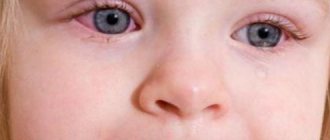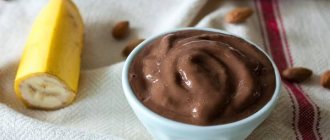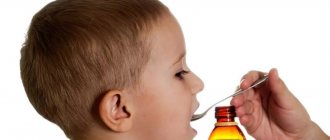TOP 10 ointments for cough control: names and applications
Cough ointment contains warming and antiseptic components, which together stimulate blood circulation and have an antispasmodic, distracting, analgesic, and calming effect. This dosage form is used in the local treatment of respiratory diseases - nasopharyngitis, laryngitis, rhinitis, pneumonia, tracheitis. The ointment fights the symptoms of acute respiratory infections - rhinitis, cough, nasal congestion, wheezing in the lungs, chills. Depending on the source of inflammation, it is applied to the wings of the nose, chest or back.
Ointments with a warming effect
The safest treatment for coughing is warming. The best effect can be achieved by inhalation. But for young children such procedures are contraindicated. Older children can float their feet and put on mustard plasters. But for children under one year old they are not applicable.
Children under one year of age are often prescribed cough ointments that contain camphor, turpentine, menthol and thymol. These substances have a warming effect.
The ointment is rubbed into the skin of the chest, upper back, feet and throat. It is important to avoid the heart area during the rubbing process. The active substances included in such drugs penetrate the skin. They have an antiseptic and diaphoretic effect, allowing the child to cope with a cough faster.
After applying the product, the child is dressed warmly. Woolen socks are put on your feet. Warming procedures cannot be carried out if the baby has a fever.
Indications and contraindications for the use of ointments
Cough ointment relieves inflammation from the mucous membranes of the ENT organs, dilates arterioles, thereby improving blood circulation in the lower parts of the respiratory system. Local remedies are used in complex therapy of many diseases:
- runny nose;
- pharyngitis;
- nasopharyngitis;
- laryngitis;
- tracheitis;
- pneumonia;
- bronchitis.
Warming ointments relieve nasal congestion, cough, fever, and headaches.
Many of them contain analgesic components, therefore they are effective for pain in muscles and joints, myositis and sciatica.
- violation of skin integrity (burns, ulcers, abrasions);
- hypersensitivity to main and auxiliary substances;
- exacerbation of allergic dermatoses.
Ointments with camphor, turpentine and menthol should not be used for bronchial asthma and false croup.
Operating principle
All warming ointments for coughs contain substances that have a high heat capacity. They can maintain a specific temperature in the application area for a long time.
With the help of such drugs, the severity of blood circulation and metabolic processes significantly increases. This activates the body's defenses.
At the onset of a cold, such remedies help fight the infection and prevent its development. For chronic pathologies, ointments can eliminate relapse of the disease.
Some products contain ingredients that affect nerve endings in the skin. These include, in particular, the famous “Asterisk” ointment. As a result of irritation of the nerves, blood flows to the treated areas. As a result, the product produces a distracting and warming effect.
A similar result is achieved when using turpentine ointment, which has a direct effect on the state of local immunity. If small amounts of certain compounds enter the bloodstream, the body may mistake them for danger. And increased production of inflammatory mediators begins.
When the ointment contains menthol, it is possible to obtain an analgesic effect. Thanks to this component, the sensitivity of nerve fibers is reduced, which makes them less susceptible to pain.
The best ointments for coughs and colds
Warming ointments contain substances that evaporate from paraffin, mineral oil or wax. Their vapors penetrate the respiratory tract, affecting the mucous membranes of the nasal and oral cavities, and the laryngopharynx. As a result, blood circulation in the epithelium improves, local immunity increases, and damage heals.
To combat cough, ointments with different chemical compositions are used. The choice of drugs is influenced by:
- severity of symptoms;
- form of respiratory disease;
- age.
Local remedies only alleviate the course of the disease, but do not fight the infection. Therefore, they are used in complex therapy together with antiviral or antibacterial drugs.
Dr. Theiss Eucalyptus
Light yellow ointment with a pleasant pine aroma contains three active ingredients:
- eucalyptus oil;
- pine needle extract;
- camphor.
The base is solid fat, wax and corn oil. Eucalyptus ointment is used to treat cough in adults and children 3 years of age and older. Has a combined effect on the respiratory system:
- antiseptic – disinfects the mucous membrane of the respiratory tract;
- local irritant – stimulates blood circulation in the lungs;
- anti-inflammatory – relieves swelling from mucous membranes;
- mucolytic - dilutes the viscous secretion of the bronchi and trachea;
- expectorant - accelerates the removal of sputum.
Warming ointments for children with coughs are used in two ways:
- Inhalation. Add 2 tsp to 1 liter of hot water. drug. Inhalation is performed for 5-10 minutes.
- Externally. Rub in circular motions into the skin above the chest and back. The treated areas are insulated with a towel, woolen or flannel scarf. Perform the procedure up to 3 times a day, the last time before bed.
Dr. Theiss Eucalyptus should not be used for spasmodic cough or sensitivity to camphor.
Pulmex Baby
Expectorant ointment is recommended for infants suffering from bronchitis, nasopharyngitis and other colds. It includes:
- Peruvian balsam;
- rosemary oil;
- eucalyptus oil.
Pulmex Baby has disinfecting, mucus-thinning and warming properties.
Facilitates expectoration of bronchial secretions, increasing cough productivity. Reduces wheezing in the lungs in bronchopulmonary diseases. Cough ointment for children under one year of age is used only externally. A thin layer is applied to the chest, intercostal and scapular areas. After rubbing, cover the child with a warm blanket. Perform the procedure up to 3 times a day.
Roztiran
The combined medicine for rubbing when coughing contains several active substances:
- camphor;
- fir oil;
- thymol;
- levomenthol;
- nutmeg oil.
The principle of action is due to the pharmacological activity of the components of Roztiran. When used topically, it has different effects:
- expands capillaries;
- removes inflammation;
- increases the excitability of nerve endings;
- eliminates pain;
- relieves spasms in the respiratory muscles;
- disinfects the mucous membrane of the ENT organs.
The ointment is used for coughs that are accompanied by nasal congestion, body aches, and headaches. It is recommended for adults and children over 3 years old.
Treatment areas depending on the location of the inflammation:
- pharyngitis - upper chest;
- rhinitis – wings of the nose and the temporal part of the head;
- inflammation of the trachea, bronchi and lungs - chest and back.
Rub the cough remedy in a circular motion for 2 minutes up to 3 times a day. The course of therapy is 3-5 days.
If the child is not yet 5 years old, the ointment is not applied to the wings of the nose or the temporal part, as this can lead to a spasmodic cough.
Doctor Mom
The drug is prescribed to adults and children over 3 years of age for nonproductive cough, runny nose, fever, and chest pain. He contains:
- camphor;
- nutmeg oil;
- levomenthol;
- thymol;
- turpentine oil;
- Eucalyptus oil.
Warming ointment has antiseptic and analgesic activity. Recommended for colds accompanied by body aches and rhinitis. Intended for local use. Apply in a circular motion to:
- wings of the nose;
- back;
- upper chest.
When treating children, use 2 times a day - morning and evening. The course of therapy is up to 5-7 days. If the cough worsens or skin rashes occur, the drug should be discontinued.
Star
Balm Golden Star, or Zvezdochka, is a locally irritating ointment that is used to combat cough in acute nasopharyngitis and bronchopulmonary pathologies. Includes:
- cinnamon oil;
- menthol;
- peppermint oil;
- eucalyptus extract;
- camphor;
- clove oil
A medicine with a warming, disinfecting and distracting effect relieves inflammation and alleviates the symptoms of acute respiratory infections. Used to treat children over 5 years old. Like other warming cough ointments, applied to selected areas of the skin:
- whiskey;
- back;
- wings of the nose;
- breast.
The frequency of use varies from 2 to 4 times a day. If cough attacks do not go away within 3-5 days, make an appointment with an ENT specialist.
Turpentine ointment
Severe coughs are eliminated by turpentine ointment, which has a local irritating and disinfecting effect. 100 g of the drug contains 20 g of purified turpentine oil. When used topically, blood circulation improves and the tone of the respiratory muscles increases.
Turpentine cough ointment is used with caution when treating children under 7 years of age. It often provokes allergic reactions - skin itching, rashes, redness. Apply only to the back or chest (except for the heart area). It is not used on the wings of the nose or temples.
- allergic dermatoses;
- age up to 8 years;
- kidney failure;
- severe liver diseases.
The cough suppressant is used up to 3 times a day for 1 week.
Vishnevsky ointment
Balsamic liniment fights the main symptoms of a cold - rhinitis, chest pain, cough, sore throat. It contains 2 active ingredients:
Ointment for rubbing the chest has the combined properties:
- anti-inflammatory;
- disinfectants;
- locally irritating;
- healing.
The drug is intended for local therapy. The safety of using Vishnevsky ointment in children has not been studied. Allergic reactions from the skin are possible - rash, red spots, burning. It is applied in a thin layer to the chest three times a day.
To prevent disorders in the blood composition, the drug should not be used for more than 1 week in a row.
Badger
A local cough medicine for children contains only safe ingredients:
- badger fat;
- camphor;
- red pepper extract;
- monoglycerides;
- perfume oil;
- high molecular alcohols;
- emulsion wax.
Badger stimulates blood and lymph circulation, the work of the respiratory muscles, and relieves inflammation.
Gently warms the lungs, thins mucus and strengthens local immunity. The ointment is recommended for children over 3 years of age and adults. Used for massage instead of oil or cream. For severe cough, apply to the back, intercostal area and upper chest. The frequency of use depends on the severity of symptoms and varies from 2 to 3 times a day.
- apply only to dry skin;
- avoid contact with eyes;
- apply no more than 7 days in a row.
This ointment should not be used for pustular inflammation of the skin or burns. In case of hypersensitivity to the main or auxiliary components, nettle fever occurs.
Propolis ointment
A homeopathic remedy based on propolis is intended for adults and children over 5 years old. Has a complex effect:
- antiseptic;
- immunostimulating;
- expectorant;
- anti-inflammatory;
- analgesic;
- distracting.
For local use only. Apply to the chest, intercostal and scapular areas. For severe cough, use 3-4 times a day for 1 week. After application, stay in bed for 1-2 hours.
Propolis is a highly allergenic product, therefore, in case of hypersensitivity, exacerbation of eczema or contact dermatitis, the ointment should not be used.
Bryony
Homeopathic medicine contains white bryonia extract. Used for coughs as a bronchodilator, warming and mucolytic agent. Bryonia is effective for:
- bronchitis;
- catarrhal pneumonia;
- tracheitis;
- laryngitis.
When used systematically, it normalizes metabolism and accelerates the removal of mucus from the lungs.
Bryonia is recommended for children over 3 years old. The ointment is rubbed on the back and chest, after which it is covered with a woolen scarf. At the beginning of therapy, many patients complain of a temporary exacerbation of cold symptoms - cough, nasal congestion.
But within 2-3 days these signs disappear. If relief does not occur, you should consult a doctor.
What else can you do to rub your chest?
Topical cough treatments rarely cause side effects. Therefore, ointments are prescribed to preschool children. To restore the drainage function of the lungs and increase cough productivity, you can use the following drugs:
- Eucabal is a balm with pine and eucalyptus oils that eliminates cough and rhinitis of infectious origin. For children under 2 years of age, only the back is treated, avoiding contact of the product with mucous membranes.
- Suprima-Plus is a warming drug with camphor, menthol, eucalyptus extract and thymol, which relieves non-productive cough. Relieves inflammation, relieves sore throat, reduces the viscosity of bronchial secretions.
- Vicks Active is a balm with eucalyptus and turpentine oils, menthol, camphor, which is not prescribed for children under 2 years of age. Fights cough against the background of pharyngitis, bronchitis. Apply to the skin above the sternum and upper back up to 4 times a day.
- Vitaon Baby is a balsamic liniment with olive oil and herbal extract, which has anti-inflammatory and tonic properties. Improves peripheral blood circulation, thins sputum, and increases cough productivity. Recommended for children from 6 months, used up to 3 times a day.
Warming ointments and cough balms should be applied before bed until the symptoms of acute respiratory infections disappear.
But if the cough persists for more than 5-7 days, make an appointment with your pediatrician. Warming ointments are local cough preparations that affect the functioning of the respiratory muscles and the mucous membrane of the ENT organs. They alleviate the symptoms of the disease and shorten the recovery period. To achieve the effect, you need to use them regularly for 4-5 days.
source
How to choose the right product?
The benefits of drugs that relieve pain and swelling from bruises and sprains, eliminate bruises, are obvious to the whole family. But if adults go to the pharmacy without any extra thought and buy themselves any post-traumatic medicine, then this approach is unacceptable for children. Most adult ointments for bruises and gels for hematomas can cause allergies in a child, and this can lead to even greater swelling.
Before choosing a remedy specifically for an inquisitive child, you should understand that all drugs that are used after injuries are divided into three groups according to the type of action:
- Painkillers. This group includes ointments and gels, as well as sprays with a pronounced analgesic effect. We are mainly talking about non-steroidal anti-inflammatory drugs for topical use. You cannot do without such a medicine in case of severe sprains, dislocations, ruptures of ligaments and muscles.
- Coolants. Such drugs are indispensable for severe bruises of muscles and soft tissues. With such injuries, the bones, tendons, cartilage and ligaments remain intact. Ointments and gels of this group, when applied to the skin, create a cooling effect, and also reduce swelling and moderate pain.
- Warming agents . These drugs cause irritation on the skin, which activates blood flow to the injured area of the body. This effect is useful for bruises and sprains a few days after the injury. In the early stages, warming drugs cannot be used.
It is best to have drugs from each group in your home medicine cabinet, because injuries and situations are different. But at the same time, it is important to remember, or better yet, write down and attach a small “cheat sheet” to the box of medications, which will help you quickly navigate and choose the right drug in an emergency:
- If no more than a day has passed since the injury, you can only apply painkillers and anti-inflammatory drugs, including cooling gels. Warming ointment is prohibited!
- If more than three days have passed since the injury, you can start using warming ointments.
- If the integrity of the skin is compromised, if the injury is combined with abrasions or wounds, the product should not be applied at all.
- Ointments do not help with fractures and dislocations. You need qualified medical care in an emergency room. But after providing assistance, the doctor may allow the use of pain-relieving ointments in case of a sprain; they will help to somewhat reduce pain during the first days after the injury.
The benefits of rubbing
Massaging the chest, back and feet helps relieve severe coughing and speed up the patient's recovery. This effect is achieved due to:
- warming;
- stimulation of blood flow and metabolism at the cellular level;
- strengthening the immune system and increasing body tone with the help of healing agents;
- thinning mucus, facilitating coughing and gradually freeing breathing.
Rubbing when coughing
Thanks to rubbing, a person tolerates infections better and is less likely to catch a new disease. In addition, during the procedure the patient warms up and calms down, which is important for a full and healthy sleep. As a result, not only cough decreases, but also runny nose, weakness, headache and muscle aches - the main symptoms of bronchitis, ARVI and colds.
However, before starting the procedures, you must consult your doctor about the advisability of rubbing, as it has contraindications. It is also not recommended to use this method for more than a month.
Basic Rules
There are several recommendations that should be followed to increase the effectiveness of antitussive massage:
- Rub cream, oil, fat and gel gently, using massage movements in a clockwise direction. In this case, the layer of the applied product should be thin so that everything is well absorbed into the skin.
- If the medicine for rubbing is liquid, then it should be soaked in a cotton handkerchief. The moistened cloth is used to massage the chest or back, and can also be applied as a compress.
- You should not pinch the skin or tap on the sore area, nor should you make sudden movements.
- As a rule, the chest and back areas are chosen for rubbing. To enhance the therapeutic effect, massage the feet, as there are many vessels and nerves located there.
Wool socks for the night
- At the end of the massage, the patient needs to put on clean, warm clothes that absorb well and woolen socks. The best time to perform the procedure is before bed; in this case, the patient can be covered with a blanket for greater insulation.
- You need to lie in bed after rubbing for about 3 hours. The warming effect of drugs causes a person to sweat, causing the body and clothes to become wet. If you go outside in this state, you can worsen your already weakened immune system.
- After 3 hours spent under the blanket, it is recommended to drink hot herbal tea: it is rich in vitamins, helps to relax and warm up.
An adult, teenager or infant should not be rubbed if they have a strong cough if they are allergic to the components of the drug. In this case, you can choose another recipe that does not include the irritant. In addition, gels and ointments should not be applied to damaged areas where there are skin diseases, cuts, wounds and ulcers.
It is important to remember that at the acute stage of the pathology it is forbidden to use rubbing. The fact is that at the initial stage of the disease, the patient’s temperature rises, and external influences aimed at warming up the body will only worsen the situation.
Rules of application
When a cough occurs, medicinal ointments are applied to the following areas:
- back and chest - in this case, the area of the mammary glands and heart should be skipped;
- upper lip, bridge of the nose and wings of the nose - it is especially useful to treat these areas in the presence of rhinitis;
- throat – lymph node areas should be avoided;
- feet and calves.
It is recommended to apply the medicine to dry skin that is not damaged. The treated area can be wrapped with a scarf on top. After applying the composition, you should not move or go outside. Therefore, it is recommended to use ointments before bedtime.
Rubbing products
Natural animal fat is popular. Its effect is explained by its high biological activity, since it warms well: animals accumulate it for the cold winter. You need to be careful and purchase the rubbing product from trusted hunter-procurers, as they offer the most natural product possible. In pharmacy format, chemical impurities can be added to bottles, and it is unknown how they will affect health. A one-month-old baby should not be rubbed with fat, as it is indicated only from the age of 2 years.
There are several types of fat:
Badger
Pharmaceutical preparations are also used for rubbing. Each product has a number of contraindications, so you must carefully study the instructions for use. Ointments Pulmex, Doctor Mom, Teddy Bear, Badger, Doctor Theiss can be found on the list of most pharmacies. Turpentine-based ointment is also sold in pharmaceutical stores and contains a number of useful substances for the treatment of coughs, such as turpentine oil, alpha and beta pinenes. In addition to turpentine, the composition includes water and petroleum jelly.
Home treatment uses honey, camphor or butter. Vodka is sometimes used, but this product is usually used for rubbing adults, since children's skin does not tolerate alcohol.
ethnoscience
Tablets and syrups are recommended to be used simultaneously with physiotherapy and rubbing, as the combined effect gives the best result. In this case, an unconventional approach is used for both infants and adults, however, consultation with a doctor before including rubbing in the therapeutic course is still necessary.
To combat coughs, honey is useful not only for massage, but also for preparing decoctions and compresses. Before starting the rubbing procedure, it is necessary to warm the product to 36–37˚C, that is, to body temperature. The product should be rubbed in gently and gradually. Honey relieves inflammation, strengthens the immune system and warms the bronchi. It is good because it can be used to treat newborns.
In general, this beekeeping product can be used in combination with other products. For example, honey and badger fat work well in tandem, providing a double warming effect. However, you need to remember that animal fat should not be applied to the heart area.
To use camphor oil for cough rubbing, it must first be heated to 37˚C. After this, the chest and back are rubbed, and for greater effect, you can apply mustard plasters. Sometimes by 2 tbsp. l. camphor laurel oil add 1 tbsp. l. turpentine, but this product can only be used for children who are already 3 years old.
Butter works alone or in combination with herbs, honey and shortening. Before rubbing, the product must be melted, then rubbed on the patient’s skin and covered with polyethylene to enhance heat transfer. You can add fir or eucalyptus essential oil to the product.
Vodka-based products are often used to treat adults:
- You need to pour water and vodka into a bowl in equal proportions. After this, 9% vinegar is added to the mixture.
Hot peppers
When treating a baby using the rubbing method, you need to make sure that the ointment for the procedure is not too burning or hot. An adult can adequately react to the inconvenience, but children will not be able to help themselves.
Rubbing a cough is a supportive therapy that not only relieves the symptoms of the disease, but also treats the body as a whole. The main condition is to obtain the doctor's approval and follow the rules of the procedure so that it does not cause harm.
source
Cough ointments: list of effective drugs
Finding cough ointment has always been more difficult than choosing tablets or capsules. Even when choosing a syrup, there are no such difficulties as with ointments and rubbing. Why? In 85% of cases, doctors bypass such appointments.
For various reasons, people refuse to use the funds. And the first to appear is forgetfulness. In fact, the ointment is an excellent alternative to the standard prescription for eliminating the symptom.
Cough is a reflex production of sounds that occurs in the respiratory tract. They are provoked by the immune system. The body's protective functions diligently try to get rid of pathogenic microorganisms, and reflex spasm helps with this.
With the help of ointments, rubs, balms, the immune and respiratory systems “work together” to eliminate symptoms.
The principle of using warming ointments
An ointment that has a warming effect is rubbed into the area of the respiratory tract (chest, neck, upper back). Rubbing into the feet increases the effectiveness of the procedure. After applying it to the skin, the sick child is wrapped up and given a warm drink.
Drinking plenty of fluids helps reduce the viscosity of mucus and makes it easier to clear. And the warming effect of ointments allows you to cope with colds and pathogens that cause inflammation in the respiratory tract.
The most common warming agents that can be used to treat young children include:
- turpentine ointment,
- ointment "Doctor MOM",
- ointment Dr. Theiss Eucalyptus.
| A drug | Photo | Price |
| Turpentine ointment | from 12 rub. | |
| Dr. MOM | from 156 rub. | |
| Dr. Theiss Eucalyptus | from 317 rub. |
These drugs have not only a warming effect, but also other beneficial properties.
The benefits of ointments
Basic cough medications are prescribed for adults and children. They taste unpleasant, and in 70% of cases they contribute to the destruction of microflora, causing problems with the liver and kidneys.
Cough ointments for adults can replace standard therapy. As for children, rubbing acts as an additional component.
Dosage form in the form of a cream is a group of drugs developed by pharmacists based on traditional medicine and created chemically. They can be used for inhalation, but this is rare.
Purpose: elimination of cold symptoms, as well as pathologies associated with the respiratory tract. Application: external. It is rarely prescribed, if we draw an analogy with tablets, syrups, and antibacterial substances.
The positive aspects for using ointments as a cough remedy are:
- wide selection and affordable price;
- 90% of ointments have a complex effect on the human body, which is a clear advantage over other drugs;
- predominantly the composition of ointments, balms and rubs is natural, plant-based or essential oils;
- convenient and easy to use;
- can be used from the moment of birth.
Rubbing with cough ointment affects the body gradually. The key point is the evaporation of the substances included in the composition. Mechanically, this is possible due to the lipophilic bases: wax, paraffin.
Evaporating, microparticles begin to affect the mucous membranes of the nasopharynx:
- sections of the bronchi (upper);
- trachea and nasal part;
- throat.
Since ointments are mostly fatty and gel-like, the local effect provides the corresponding structures with stabilization and functioning. Thanks to this, blood circulation is normalized, and the elimination of provocateurs is accelerated.
How much the substance will heat up, and how much it will warm up as a result, depends only on the selected type of drug.
You can use this type of medication yourself, but only if you have an initial respirator or a mild form of a cold. If the bronchial tissues have received a serious organic change, you will need to consult a doctor.
Need to know! A one-year-old child or infant should be treated only under the supervision of a doctor. All necessary appointments are made by a specialist. It is prohibited to apply ointments on your own. Most of it strongly heats the surface of the skin and can cause burns to the dermis.
First aid
If a child falls and screams, cannot get up, or complains of pain in the arm, first of all you need to calmly and sensibly assess the situation:
- When spraining ligaments. The symptoms of a sprain differ from muscle injuries primarily in the timing of the onset of pain. If the ligaments are stretched, the pain comes instantly, if the muscles are damaged, the pain will be delayed over time. When ligaments and muscles are sprained, swelling appears; the swelling site sometimes looks somewhat bluish. In this situation, the child should be reassured, the injured limb should be kept at rest, the damaged area should be lubricated with pain-relieving ointment or sprain gel, and the child should be taken to the nearest emergency room.
- For bruises. The most common childhood injury is a bruise. If your child has a hematoma on his face, leg, arm or other part of the body, at the first stage it is important to apply something cold. A piece of ice wrapped in a kitchen towel or cloth napkin will do. The main thing is not to cause local frostbite.
- No matter what grandmothers and traditional healers say about the benefits of an iodine mesh for bruises and sprains, it is better to refuse such treatment in childhood. The baby's skin is delicate and very quickly absorbs and immediately absorbs iodine. Very often the result is an overdose of iodine, which poses a serious danger to the child. Therefore, if desired, a teenager can draw a mesh with iodine, but this is contraindicated for a child.
- To alleviate a child’s condition after a bruise or sprain, gels and ointments alone are not enough. It is worth learning how to apply a pressure bandage. To do this, it is best to use an elastic bandage. It is important not to overdo it or cut off the blood supply by bandaging too tightly. The optimal pressure of the bandage is considered to be such that the bandaged limb does not change the color of the skin and does not get cold.
- Remedies that help with bruises and contusions on the face, legs, arms should not be used for hematoma and bruising of the eyelid, eyebrows, as well as for bruising of the ear. Gels tend to liquefy and may get into the ears or mucous membranes of the eyes. This should be avoided at all costs.
- After cooling, apply a gel with an analgesic and anti-inflammatory effect , for example Troxevasin. At the next stage, the child will be shown the opposite - applying heat and applying an anti-bruise agent with a warming effect so that the blood supply in the area of soft tissue bruising and hematoma formation is restored. The faster this happens, the faster the bruise will go away.
Usually bruises do not need to call a doctor; they can be easily treated at home. However, there are several situations in which the child should still be taken to the emergency room:
- extensive hematoma on the head;
- severe bruise of the forehead or temporal lobe;
- an extensive hematoma on the bridge of the nose, under the eyes of a small child - an infant and a child under one and a half years old.
The consequences of such bruises and hematomas can be unpredictable, especially for children, because head injuries are always fraught with hidden pathologies that cannot be cured with ointments and gels. Therefore, it is important that the child is examined by a traumatologist, and, if necessary, by a neurosurgeon.
For bruises
Bruise and bruise are different, so you need to start from the specific condition of the child. If he has a minor bruise, accompanied by a small abrasion, then it will be enough to rinse the area under running water, apply a cool water or ice compress for 5-7 minutes, and then lubricate it with an anti-abrasion cream, for example Baneocin . This will be quite enough to avoid infection by bacteria.
A bruised nose, bridge of the nose, lips with swelling are almost always harbingers of the imminent appearance of a hematoma. Appropriate assistance should be provided. More complex and deep bruises need to be examined by a traumatologist. This applies to bruises of the knee and elbow joint, which cause swelling and limited movement of the joint.
The child needs to apply cold and lubricate the damaged area with cooling gel or ointment. And then be sure to take him to a medical facility. A delicate injury such as a testicular bruise in boys may require calling an ambulance. If the pain does not go away for several minutes, there is no need to apply anything, just lay the child down, apply a towel moistened with cool water (not ice!) and wait for the ambulance to arrive.
For other injuries
If the child’s limb bends unnaturally, if the swelling increases rapidly and any attempts to move cause severe pain, you should not find out on your own what happened to the baby. Any options are possible - from cracks to displaced fractures. This can only be determined by taking an x-ray of the damaged area.
Do not hesitate - the child must be taken to the emergency room or any nearest hospital as soon as possible.
Types and uses of ointments
In order for the ointment to be used as intended, it is necessary to know the exact diagnosis. Before purchasing, consult a therapist to ensure that the product does not cause harm. In pharmacies you can buy several types of drugs based on the principle of action, age is also taken into account:
- for newborns. The substances in it actively affect the pathological process in the respiratory organs. At the same time, they do not cause damage to the skin;
- Vishnevsky ointment. Its qualities are suitable for literally everyone, but it has a disgusting specific smell;
- turpentine liquid;
- warming.
The latter type helps relieve inflammation and has antibacterial properties. This type of ointment is often prescribed to speed up the healing process. Used for dry and wet cough.
These drugs are divided according to their ability to remove dry cough or with sputum. The composition of cough ointment can be of homeopathic or synthetic origin.
Warming ointments for coughs
It is recommended to warm the bronchi in order to prevent inflammation only with the help of warming ointments. The substances ensure the normalization and functionality of the upper tract of the respiratory system.
Basic action: irritation (local) of nerve endings and receptors, which will cause expansion inside the blood vessels.
As a result, we get: blood flow increases, and the temperature in the place where the cream was applied heats up.
Used for therapy in case of diseases of the bronchi or trachea. Promote the disappearance of productive and non-productive reflex. It thins and removes mucus, and the symptoms of the disease associated with the respiratory system go away.
- Cough remedy called Doctor MOM. The drug is created on the basis of natural ingredients: turpentine and nutmeg, eucalyptus and camphor, menthol. Has a pleasant smell. Has analgesic properties. It is also allowed for application to injured areas of the skin. Which significantly minimizes discomfort.
- “Doctor Theiss” has similar properties. Based on: eucalyptus oil and camphor. Used for dry coughs to thin mucus, and for productive coughs to remove mucus from the respiratory tract.
- Turpentine ointment is often recommended. But it has a specific smell, since it contains turpentine oil, which is obtained from pine needles. After application to the bronchi or other areas, the medication takes effect within 7-15 minutes. Relieves inflammation, kills germs and infections. The price of the medicine is low, but the result is high.
Medicinal ointments for dry cough
Provided that the children's warming cough ointment is not suitable for some reason, but a non-productive cough causes many problems. If the child feels a strong deterioration in his condition, it is recommended to use special ointments to eliminate and combat a dry cough (do not use if it is wet).
This appointment is rare. Mechanism of action: reduction of irritation, inflammation that occurs in the receptors of the bronchial mucosa or other upper respiratory organs. Used to stimulate expectoration.
The list of medications for dry cough is small: only two types of ointment: Propolis and Theraflu. Both drugs are based on natural ingredients. Suitable for therapy against colds, during the initial form of inflammation. Helps inhibit pathogenic microorganisms. Requires warming up before applying to skin.
Using distractions
You can always put into practice cough medications that are included in the group of distractions. There is a kind of switching of brain activity from pathology to other organs. Warming with such drugs is also possible. These include:
| Name | Compound | Action |
| Asterisk (category: balm) | Oils: clove, eucalyptus, cinnamon | Complex effects: relieving inflammation, cleansing the nasopharynx, pain relief, improving breathing |
| Vicks Active (ointment-balm) | Oils: eucalyptus, turpentine, menthol | It can be called a distracting drug, but the effect is complex. Helps in the treatment of upper and lower tract organs |
Important! Distracting drugs, such as ointment-balm, are used not only to rub the surface of the skin. Many experts recommend using it for inhalation procedures. “Asterisk” is especially good.
They are also allowed to be used by adults and children over 6 years of age to prevent colds. Reviews show that inhalations with such ointments are effective and efficient.
Other varieties
Warming ointments for coughs, also those classified as medicinal ointments for dry coughs, are popular and in demand.
But there is an additional list that points to excellent drugs. You can use it after consultation with your doctor. 25% will significantly help eliminate symptoms and cough reflex in babies.
Cough remedies are classified as balms:
- To reduce the reflex and cold symptoms, Bryonia is suitable. The basis of the product is a white step. The herb is used provided that the patient does not have hypersensitivity to the plant. The step is used in microdoses, but may have an undesirable effect.
- Herpferon is recommended as an antiviral agent for coughs and elimination of pathogens. It is based on a substance produced by humans – interferon. The severity of the cough reflex is significantly reduced, since the effect occurs directly on the pathogen. At the same time, the endogenous protective functions of the human body are influenced and stimulated.
- Anti-inflammatory ointment, which is used in many medical practices - Vishnevsky balm. As a single cough remedy, it does not significantly alleviate the patient’s condition (if we consider cough specifically). But an excellent component for creating an ointment from several drugs at home.
Indications for the use of cough ointments
Children under one year of age (otherwise called “babies”) are defenseless both from other people and from viruses. It is not uncommon for a child to start coughing as a result of a prescribed vaccination. The main indications for the use of ointments are:
- non-acute, quickly treated respiratory diseases;
- nasal and ear congestion;
- colds;
- general malaise without fever;
- dry and wet cough, constant sneezing.
During this period, children undergo a series of preventive vaccinations to develop immunity. A small person suffers most of the complex diseases in childhood. The main sign is coughing, sneezing, fever, constant crying and screaming of the child. Manufacturers of therapeutic, preventive and warming ointments recommend:
- Before self-medication and purchasing ointment, you should consult a specialist.
- Before using the drug, you should read the instructions on contraindications, side effects and the general dosage of the drug.
The points must be followed, because ignoring them can lead to even greater morbidity, which can develop into complications. They will be much more difficult to cure than a common acute respiratory viral infection. Babies cannot protect themselves on their own, so parents should take care of them, consulting with experienced doctors and listening to their words, not forgetting the instructions of the ointment.
Balms and creams for children
Rubbing a problem area in a child requires a mandatory preliminary examination, diagnosis and selection of cough medicines. Turpentine ointment helps a lot. But it’s not suitable for every baby.
20% of parents complain of an unpleasant odor, which interferes with rubbing and causes a gag reflex in children. It should be noted that this ointment’s consistency and color are not entirely pleasant.
To prevent this from happening, doctors prescribe grinding the substance in small quantities. Apply with gentle massage movements to the chest and neck area.
Be sure to avoid the territory of the heart. Rubbing should be done on the back and chest. To reduce odor, children wear cotton clothes. After which they put him to bed, but cover him up to the chin. It is also recommended to dilute 1:1 turpentine ointment and baby cream.
How to use ointment for children under one year old
For infants, it is impossible to arbitrarily determine balms for use. Only a qualified doctor will tell you specifically whether rubbing with the chosen ointment is possible and will indicate the dose and number of sessions. This is due to the fact that the drugs can harm a fragile body and cause thermal burns.
One of the harmless but effective ones is called badger fat. It is allowed to be given to both infants and if the patient is a one-year-old child. Used as a rub, an additive to tea or milk. Badger fat has absolutely no side effects, does not cause allergic reactions, and is tasteless.
Important! Apply a thin layer of any prescribed children's cough ointment not only to the back, chest, but also to the feet. This increases the chances of a quick recovery.
Ointments for children from one year old
If a one-year-old child is sick, you will need to approach therapy carefully. A positive point is the possibility of prescribing a large number of balms. The choice is made not by the parent, but by the doctor. In accordance with the indications and instructions for use.
Popular and effective ones include “Badger”, Doctor MOM and Theiss. The drugs relieve the inflammatory process, strengthen the body's protective functions, and have a minimum number of contraindications and adverse reactions.
Classification of ointments
When coughing, warming ointment is especially useful. Almost all local drugs provide this effect. However, there are some peculiarities. Depending on this, the following types of ointments are distinguished:
- Warming compounds have a high heat capacity. This allows you to maintain the desired temperature for a long time. Due to this feature, blood circulation in the problem area is stimulated, which accelerates metabolic processes. Thanks to this type of exposure, the body activates defense mechanisms.
- Drugs that irritate the epithelium – as a result, blood circulation is also activated. However, the action of such agents is based on a slightly different mechanism.
- Combination drugs have several beneficial effects at once. Often ointments have an anti-inflammatory and analgesic effect.
The undoubted advantage of such drugs is the fact that they enter the general bloodstream only in small quantities. At the same time, ointments do not have a negative effect on the digestive organs.
These features lead to the fact that local products have a minimum of contraindications and adverse reactions. Moreover, the method of using such drugs is simple. Rubbing does not take much time and does not require special skills.
Use for pregnant women and lactation
Pregnancy is an important and dangerous period for a woman. Responsibility also rests with the doctor to whom they turned for help. Ointments (especially warming ones) can change the structure of mother's milk, taste, or completely eliminate it.
In 70% of cases, dosage forms affect the development of the child, as they penetrate into the blood and have a negative effect through the umbilical cord.
A particular risk for use during pregnancy and lactation concerns turpentine ointment and Vishnevsky liniment. These drugs, even in small quantities, spoil the composition of milk and cause undesirable reactions in the body.
Contraindications and side effects
Cough ointments are medications. This means they can give side reactions and become dangerous. To avoid irritation, swelling and problematic effects, you should not apply the ointment to the surface of the body where there are open wounds or the child’s condition is classified as serious.
All appointments must be made by a specialist. In addition, parents are required to study the instructions. If a danger is detected, inform your doctor.
Cases of intolerance to herbal and chemical-based drugs have become more frequent. Which manifests itself in the form of dysfunction of the kidneys and liver. It is strictly forbidden to use balms if you are prone to bronchial spasms.
A taboo on treatment with ointments occurs in patients with diseased kidneys and liver, and bacterial diseases of the skin. Pregnant women should visit a doctor, but still try not to apply dosage forms during illness.

